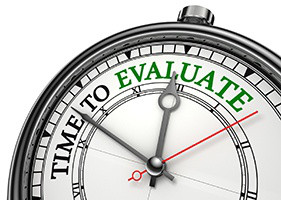 You completed a new workplace wellbeing initiative…now what?
You completed a new workplace wellbeing initiative…now what?
As the initiative comes to an end, don’t just forget about it and move on. Use the experience as a guide to ensure that your next workplace wellbeing initiative is even more meaningful and effective.
Evaluating The Initiative
One of the most vital aspects of implementing successful workplace wellbeing initiatives is evaluating its success and impact. The information gleaned from such an assessment can demonstrate the value of your initiative and help you to improve further wellness efforts.
Consider our Resolve21 challenge, where employees made personal goals and worked to achieve them over a 21-day span. For participants, that 21st day marked the challenge’s clear end date. For our wellbeing team, however, the work was far from over! In the week after Resolve21 wrapped up, they made sure to take the time to evaluate the effort.
The team looked to answer the following questions:
- Was there as much participation as we’d hoped for?
- Did employees find the challenge meaningful?
- Did they feel there was adequate support and communication associated with the challenge?
- For those who chose not to participate, why did they make that choice?
- What areas of wellbeing did employees focus their goals on?
- Did we as a team feel the planning and implementation process went well? Are there ways we can make this easier or more effective in the future?
How do you get answers to these questions? Surveys are a great way to get feedback from your employees. Just be sure to keep your surveys short; employees will be less compelled to participate in a long survey.
Your wellbeing committee itself is an excellent place to go when evaluating your efforts. Your committee likely represents employees from various departments throughout your company, which means they can bring diverse perspectives. They may have insight from their day-to-day interactions with coworkers – did their peers talk about the initiative? What positive or negative comments did they hear? Though less formal than a survey, the feedback your wellbeing committee gathers from these casual interactions with coworkers can still be insightful.
Putting The Results To Good Use
Once the evaluation is complete, you can use the results to provide direction on what your next call to action should look like. By taking into consideration the feedback from your people, you will be on the right track to executing an engaging and effective workplace wellbeing initiative the next time around.
For example, if we discovered that the majority of our participants made goals related to financial wellbeing, then we should consider having our next initiative further support that interest. Or perhaps our results revealed areas in need of improvement, such as the way we communicated with employees, or the timing of the initiative. We can make an effort to improve these areas the next time.
Every workplace wellbeing initiative, regardless of how well it was received by your employees, can provide valuable insight for the planning of your future efforts!



